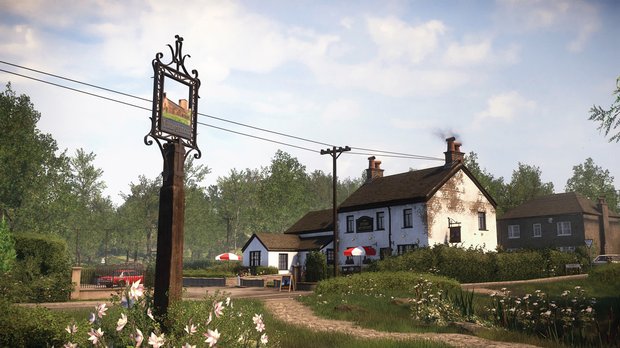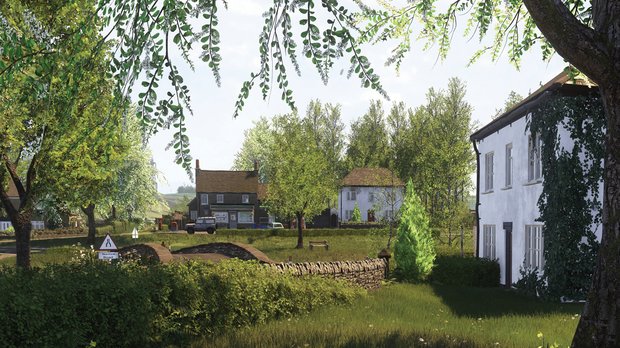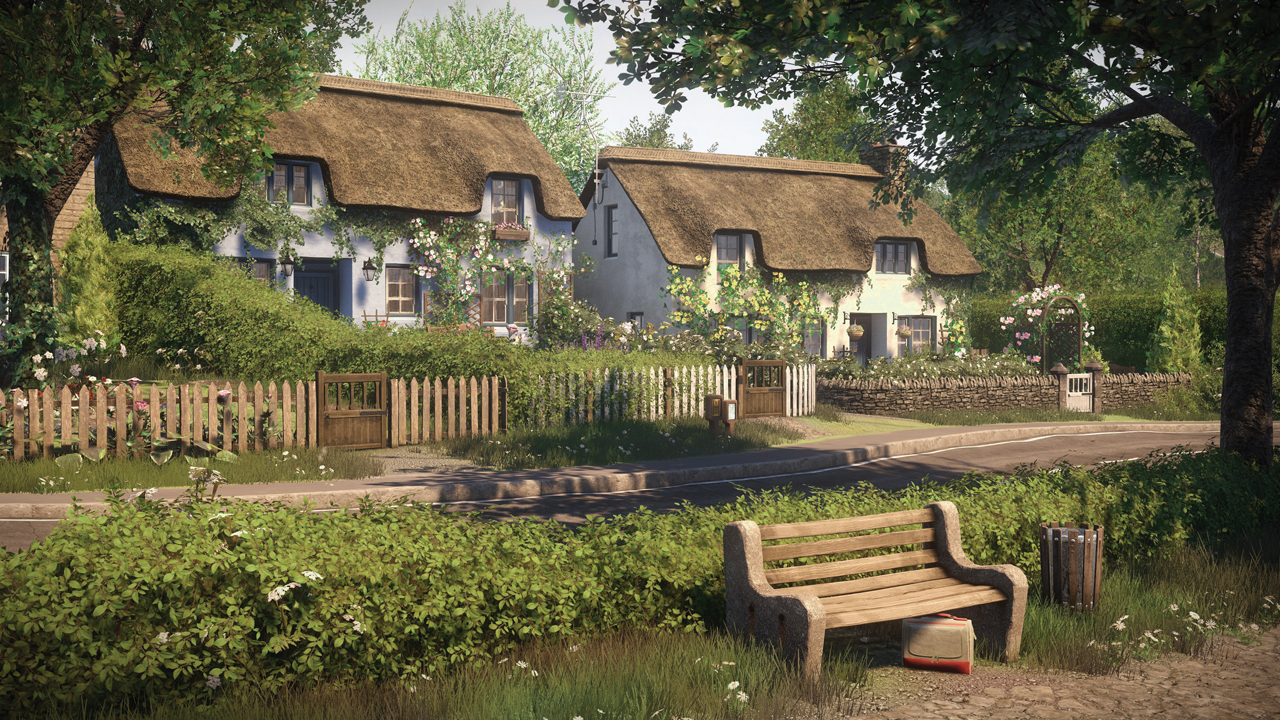Everybody's Gone to the Rapture, but I'm glad I got left behind
Everyone has a local, a drinking house that serves up the requisite beverages, pies, chips, and good times to stave off the dullness of just tottering home after work and plonking down in front of the TV. There’s nothing quite so cheering, nor as British, as necking some ale with pals, lobbing pointy sticks at cork on the wall, or letting the little ones leg it about a beer garden while you shelter under a parasol gossiping about your neighbours.
These are experiences we’ve all had, or will have (please note that GM is in no way endorsing underage drinking…). Which is perhaps why The Stars At Night, the local public house at the centre of my exploration-led play of The Chinese Room’s latest, is quite so unnerving. You can spy all the details that bring to mind these familiar interactions, but the place is, quite literally, dead.

Glasses sit empty and we can see the running score of a game of darts, half-played, chalked on the board. Rapture is set in the ’80s, long before any smoking laws were put in place, so there’s an old, familiar, hazy tinge to the air that hits your vision when you first enter the pub. It’s these memory-tapping aspects that make this game’s haunting narrative – that of a small, unremarkable town suddenly struck by a mysterious, John Wyndam-esque apocalyptic disaster – all the more meaningful.
I say this pub was at the centre of my playthrough. What I really mean is, this pub was at the centre of my playthrough. The story that unfolds as you wander about the Shropshire village of Yaughton isn’t necessarily linear. As you explore, glowing balls of revolving light swoop about, poking you in certain directions and luring you towards areas that might reveal more of a particular story. One such ball led me to the beer garden of The Stars At Night, where fluttering, shimmering silhouettes of the town’s residents sit talking. Scattered throughout the immediate area are various conversations, snippets of dialogue which ever so gently peel back the greater mystery of what happened to the town and its residents. But while you chip away at this larger puzzle, you also unearth the tribulations of the people that were ultimately affected by these catastrophic events.

While the world, viewed in first-person, does look genuinely beautiful, it’s the writing that sets these scenarios apart. Dan Pinchbeck, Rapture’s creative director, tells the mag that the original inspiration for the game came while he and a colleague played through Fallout 3. You wouldn’t be a lone wanderer with a gun in a real apocalypse, they surmised. You wouldn’t be some kind of hero mutant exploding heads. You’d most likely be the pile of ash in the corner. And so the aim from the outset was to craft a touchable, more human end times. To tell the story of that pile of ash.
It’s fascinating to see the life of a character you never actually meet unfold through the discovery of disparate moments. You might wander into the doctor’s surgery and find out what happened to the man charged with keeping these people healthy when everything started going all Day of the Triffids. You can potter over to a nearby house and stumble upon the harrowing fate of an entire family, not through the explicit placement of destruction, rubble, or handily left diaries, but through the more affecting links between the subtle clues you see in front of you and the words that are uttered to frame them.

Indeed, much of the town is hauntingly pristine, with the few tell-tale slices of evidence stark when they’re discovered. Some scrunched up tissues next to a sofa. White paint spilled outside of a shop front. A bottle of whiskey perched tellingly on the bonnet of a car with the door open and blood flecks on the tarmac. This all feels purposeful, and makes the myriad intimate tragedies a strange, unlikely joy to unfold.
Weekly digests, tales from the communities you love, and more
There are aspects that feel a little at odds with this unique storytelling design. For all of the intriguing things there are dotted around for you to discover, there seems to be an awful lot of stuff you can’t delve into. In my bid to uncover everything that the area had to tell us, I ended up bumping into a lot of doors that wouldn’t open. At one point I had to stop myself, as I realised I’d spent more time rubbing up against sheds than I had actively following the light balls enticing us to continue the main narrative. Speaking of: as you approach these, pinpointing as they do a slice of dialogue ready to be heard, there are occasionally instances where you have to ‘tune’ them in using the Sixaxis. It works fine, but it can be difficult to visually distinguish which balls are there to tune, and which ones aren’t. This wouldn’t be such a problem if it didn’t so jarringly remind you that, yes, you are playing a game, and no, you’re not actually in this incredible storyworld.

Because this is a world you’ll want to dive into. Its characters that you don’t meet are too interesting to ignore, and its setting touches upon too many slices of our own lives to not sit up and take notice. Yaughton is set to be a fine place to visit, even if the locals you’d ordinarily like to share an ice-cold pint with appear at first glance to all be long gone…
Click here for more excellent GamesMaster articles. Or maybe you want to take advantage of some great offers on magazine subscriptions? You can find them here.



